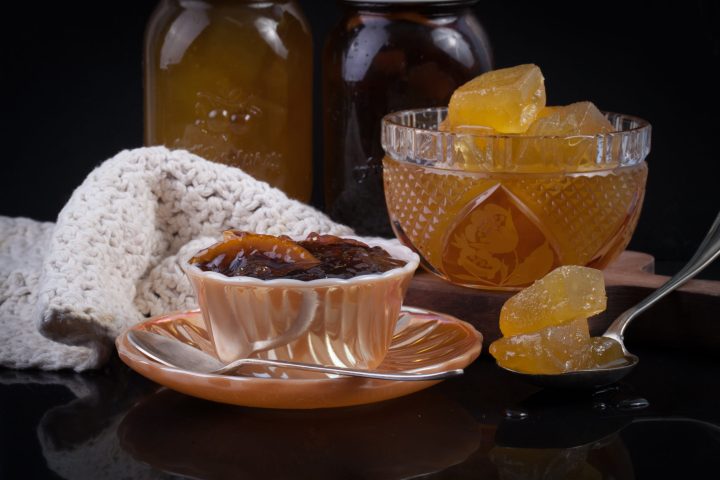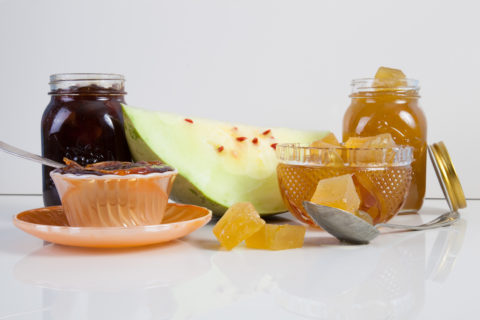MAIN INGREDIENT
Melon of the wild

It looks just like a watermelon. It is a watermelon. Just not the one you know. Tony Jackman slices into a makataan.
This column is paired with this recipe
Makataan is a lovely word. It rolls off the tongue in three syllables, the third long aaa being accentuated as if in birdsong…. Ma-ka-taaaan, ma-ka-taaaan. You can almost picture a cocky little bird topped by a brightly coloured comb trilling it as an incitement to mate.
But makataan is the name of a fruit, and a wild one at that. It looks exactly like a watermelon. Which is what it is. But not the one you got to know as a child, running around the lawn with slices of its lovely sweet, red flesh and spitting out the pips.
Makataan. I see no need to translate it to English other than descriptively, i.e. to explain that makataan is a wild watermelon. From the outside you might think, well, it’s a watermelon, obviously, but it’s when you cut inside that you might reel back in shock, were you unaware of what it was. You presumed it to be a watermelon, so where is its watery-crunchy red flesh, and its blackish-brown pips?
With a red watermelon, or pink if you prefer, it’s ready for you to slice into its giving red flesh and eat right away. And then eat more and more because that’s how compelling it is to the palate.
The first thing you’ll notice about the makataan, after the colour, is that the portion between the rind and the seeded centre is twice as broad; the equivalent of that greenish-white part between the rind and the red flesh of the better known sweet variety. This pale-green very hard flesh is the part of the makataan that is usually eaten. But not until the venerable old arts of the country kitchen have done their work.
The second thing you’ll observe is the colour of its pips. They’re the most gorgeous rich, deep butterscotch hue. You could create an artwork out of them.
My friend Heyla Meyer, who is a seasoned preserver and jam maker among other sweet talents, allowed me into her Cradock kitchen this week to watch her prepare a whole makataan for preserving. Then she gave me a quarter of a makataan to take home with me because I wanted to prove to myself that I could do it. She produced an Annette Human book, Lekker vir Later, and showed me the recipe for Wildewaatlemoenkonfyt (wild watermelon jam or preserve). It’s not something I’d ever imagined I would make, but here we are. A day and a half later, I knew how to make it, pitfalls and all. And Heyla explained its process so clearly (and I listened so intently) that I found I was able to make it without referring to the recipe, just recalling exactly what the steps were that Heyla had explained.
It’s not complicated but it does take time. And lime. That’s the first thing you have to get your head around. “Lime?” I asked, stupidly. “Lime juice?” Erm, no. Calcium hydroxide, a white powder produced when quicklime is mixed (slaked) with water. It’s also known as cal, builder’s lime, caustic lime, or pickling lime, which seems to fit here. Pharmacies sell what is called the food grade version of it, labelled slaked lime. Experts explain that the calcium in it binds to pectin. They also warn that in rare cases it has been linked to botulism. It’s very important to get the ratio of water to slaked lime right: 20 to 1. Just a little. Don’t get carried away.
Makataan chunks go into water mixed with slaked lime and sit in it overnight, after which you have to wash it off very well with clean water. I washed and rinsed, washed and rinsed, as if the very devil were in it and out to get me. If you do not get rid of every last vestige of it, lime sediment may collect at the bottom of your preserve jars and your efforts will have been wasted.
Within a day of first slicing into my quarter makataan, I had made both preserved makataan and my own makataan marmalade. It wasn’t planned like that, but a marmalade it sure is. And boy does it have flavour. It’s the Accidental Marmalade.
As for the centre flesh? This can be used to make jam. I had a stab at it and my recipe is alongside.
But there were other steps to follow first, so let’s step back a little and walk through it step by step.
Preserving makataan (wild watermelon/ wildewaatlemoen)

(Photo: Louis Pieterse)
For this recipe you’re using one quarter of a large makataan, so multiply as necessary. Slice the makataan in half and then each half into two quarters (you have four great big chunks). Take one quarter and cut half-moon slices about 2 cm wide. Peel each slice and discard the hard rind.
Use a fork to jab lots of holes along both sides of the slices, for the lime to penetrate. Add 25 ml slaked lime per 5 litres of water to a large bowl, and mix. The stabbed makataan chunks go in and are left overnight. This gives it a wonderful crunch. Next day wash it in fresh cold water to make sure every last speck of lime has disappeared. Let it stand in clean water for two hours, then drain it and put it in a big heavy pot and cover with cold water. Bring it to a boil and cook it briskly until a toothpick inserted into it slides in easily, without the flesh being too soft.
Add equal quantities of fresh cold water and white sugar to a large pot and bring to a boil. For a quarter of a very large makataan I used 2 litres of water and 8 cups (2 litres) of sugar. Traditionally lemon juice is added but I did not as it would have inhibited the colour; the happy result was golden chunks of makataan. I did add a 3 cm piece of peeled ginger, however, at Heyla’s suggestion. When the sugar is dissolved, add the makataan chunks and boil briskly until the syrup has thickened to a jam-like consistency. This could take anything from an hour to two. Then bottle in sterilised jars, filled to the brim, while still hot. DM/TGIFood





Comments - Please login in order to comment.